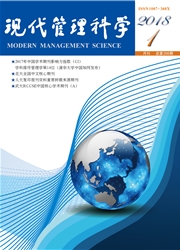

 中文摘要:
中文摘要:
转换成本是形成顾客忠诚的一种客观要素,创造内生化的转换成本已经成为企业非价格竞争的一种重要手段。本文将厂商对收益的时间偏好引入具有消费者转换成本的两阶段双寡头竞争模型,认为短期最优化的厂商将通过制定高价格实现当期的收益最大化,而不管未来收益如何;长期最优化厂商将进行综合权衡,制定使其折现总收益最大化的价格。研究表明,两类厂商均具有正的自身效应与负的交叉效应,并且只有在转换成本小于运输成本的条件下,消费者才有可能转换厂商,否则所有的消费者都被现有厂商完美锁定。短期最优化厂商的决策不受时期和转换成本的影响,第2期如同第1期在时间上的完美复制,但短期均衡是不稳定的,厂商有降价的激励。而长期最优化厂商的收益要严格劣于短期的情形,这是因为它去除了短期均衡中厂商默契合谋的隐含假定,产生了相对较多的竞争。
 英文摘要:
英文摘要:
Switching cost is an objective factor that makes consumer loyalty. Creating endogenous switching costs has become an impor tant means of nonprice competition among enterprises. In this paper, the time preference of firm is introduced into a twostage duopoly competition model with consumer switching costs, which assumes that the myopic firm would pursue a highprice strategy at the first stage to maximize its current revenue, regardless of the future revenue. While the hyperopic firm, on the contrary, would set a tradeoff price to get the largest possible discounted total revenue. It is concluded that : 1 ) both of the two types of firms have positive "ownfirm" effect and negative "crossfirm" effect; 2) consumers would switch to the other firm only when the switching cost is less than the transportation cost, otherwise all consumers will be perfectly locked ; 3 ) The myopic firm' s strategy has no difference in the two period, and wouldn' t be influenced by switching costs, but the myopic equilibrium is unstable for each firm has the incentive to lower price; 4) The equilib rium revenue of the hyperopic firm is strictly inferior to that of the myopic, for it removes the implied assumption of tacit collusion in the myopic equilibrium, which leads to more competition and less revenue.
 同期刊论文项目
同期刊论文项目
 同项目期刊论文
同项目期刊论文
 期刊信息
期刊信息
